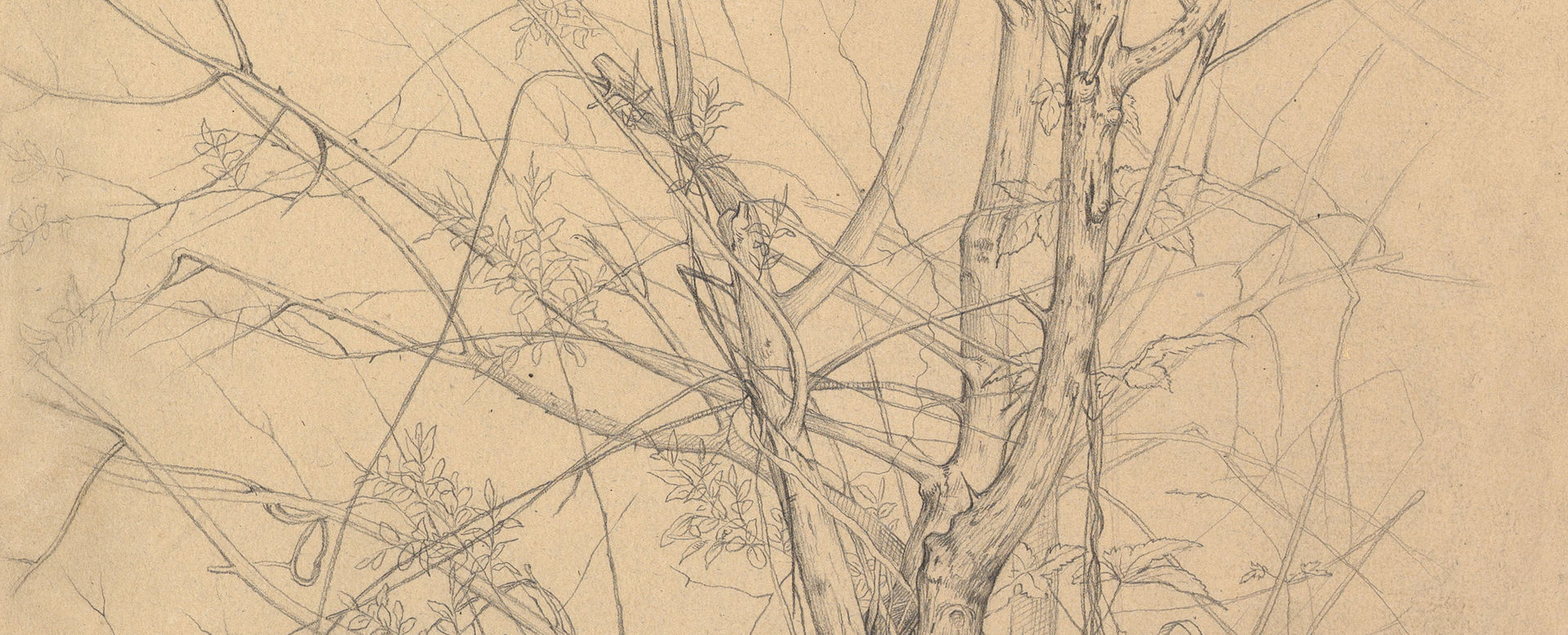Design for a Brooch with Cabochon Emeralds and Pearls in the Renaissance Revival Style
Alexis Falize French
Not on view
Design for a brooch by French jeweler Alexis Falize in 1853, part of an album of drawings by various artists for individual pieces of jewelry, containing a variety of designs in the Art Nouveau style of the late nineteenth and early twentieth century, as well as some pieces of the Second Empire. The design consists of a large, oval, cabochon emerald, flanked by four round, white pearls, inside a scrolling frame of gold with red enamel. The frame is surrounded by thin scrolling motifs of gold, which form interlacing garlands with small, round, white pearls. From under the frame hangs a stylized gold fleur-de-lis motif with a gray, oval pearl in the center, from which hangs a horizontal strip with small, oval, gray pearls, holding another frame of gold scrolls with a teardrop-shaped cabochon emerald, decorated with gray pearls, and with a strip of three white pearls hanging from the bottom. From the scrolls surrounding the red scrolling frame, and to the sides of the fleur-de-lis motif in the center, hang two oval frames made of gold scrolling motifs, each holding an oval cabochon emerald, flanked by four rings with small, gray pearls (or brilliants) that interlace around the gold frames, and with a strip of three round, white pearls hanging below them. The design reveals are of the style of the Second Empire in France, which were inspired on Greek and Roman antiquity and Mediterranean cultures, and featured compositions with semi-precious stones, such as turquoise and coral, together with enamel and gold. It is possible that, instead of gems (emeralds), the manufactured jewel was created with colored glass or with enamel.



